‘WFP aims to ensure food security by innovative means’
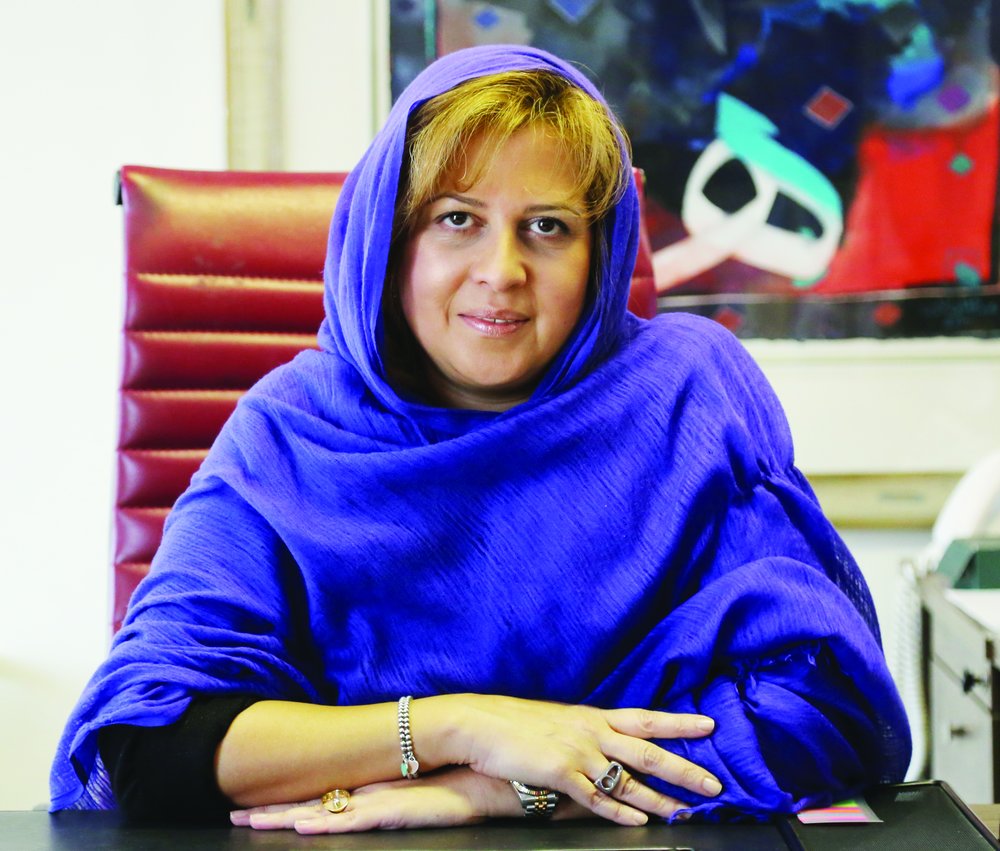
TEHRAN — The World Food Program (WFP) is the world’s largest humanitarian agency fighting hunger worldwide, delivering food assistance in emergencies and working with communities to improve nutrition and build resilience. Each year, WFP assists some 80 million people in around 80 countries.
A WFP study published earlier this year established a link between hunger and migration. It found that countries with the highest level of hunger, coupled with armed conflict, have the highest outward migration.
For each additional year of conflict and bloodshed, an extra 40 people out of 10,000 will flee their country. It showed that people often move several times within their own country before crossing borders, leaving behind their land, jobs and livelihoods.
As Negar Gerami, WFP Representative and Country Director in Iran, has said “In the Islamic Republic of Iran, WFP currently provides assistance to 30,000 Afghan and Iraqi refugees who have fled their countries over the past 30 years due to war and conflicts.”
The Tehran times have conducted an interview with Gerami on the occasion of the World Food Day, October 16.

Negar Gerami WFP Representative and Country Director in Iran (L)
Below is the text of the interview.
Q: How many people are suffering from hunger both worldwide and nationwide? How WFP provide people suffering from hunger or malnutrition with food?
A: The World Food Program is the food assistance arm of the United Nations. We’ve been present in the country for about 30 years.
As for the number of hungry people worldwide it’s more than 800 million. Luckily, in Iran we do not have people in the way that we call them hungry. We have a hunger map which maps the world as per the number of people who are suffering from food insecurity and when you look at that map Iran is in the green. [The map is color-coded] with red or dark red [indicating] locations with extreme hunger, orange [showing] areas facing a little bit of difficulty and green where the prevalence of food insecurity is minor.
Having said that this does not mean that there are not any hungry people in Iran. What it means is that the number of hungry people does not require international assistance. In Iran we are mandated to assist refugees. And we have been doing this for over thirty years now. The refugees are mostly from Afghanistan and a small number from Iraq. These are the extremely vulnerable who are living in camps or settlements in 20 different locations in thirteen provinces in Iran.
What we do is providing a monthly ration to them consisting of the staple commodities; wheat in the form of flour or bread depending on the location and if they have the facilities to bake in their own shelters or it goes to a bakery inside the settlement, rice, oil, sugar, and pulses. This food basket is a dry one and it provides 2,158 kilocalories, the nutritional requirement per person per day.
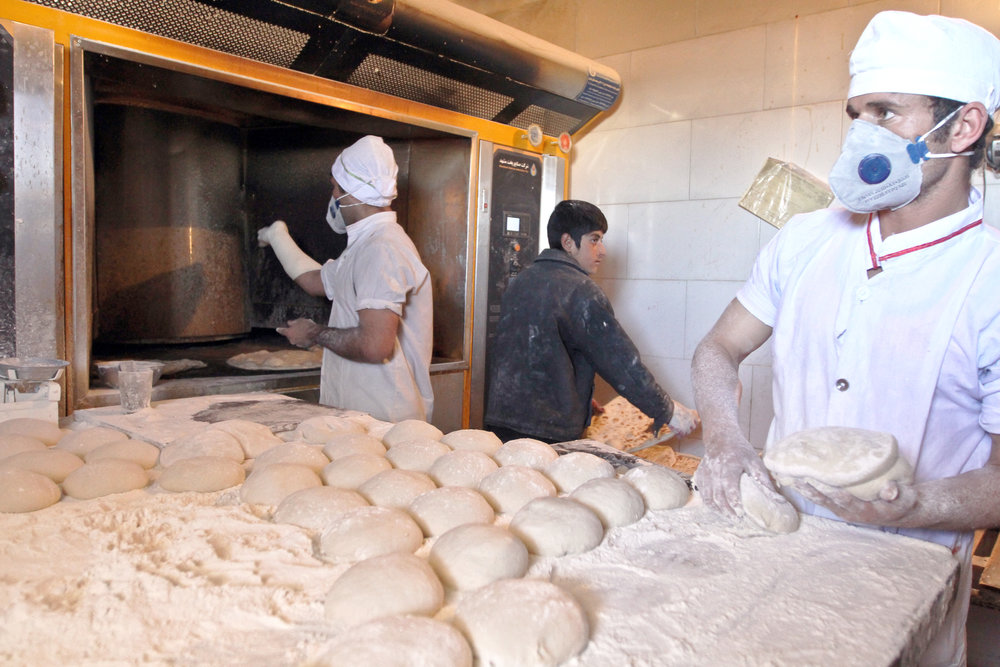
A bakery in a settlement, photo by Mohammad Khodabakhsh
At the moment we are on the cusp of redesigning our project during which as of 2018 we will continue with wheat flour distribution to the refugees again but we will be replacing the remaining commodities with a cash component allowing the refugees to decide for themselves what it is that they want to buy and giving them the option of diversifying their food intake. As you know all of us eat more than just rice, wheat flour, pulses, oil and sugar.
So this is a global trend wherever markets are available but the purchasing power of the people is compromised WFP goes for cash and replaces the traditional way of food distribution.
We aim to ensure the food security of the people and we do it by innovative means. We do not stick with what we have done for 50 years and Iran is one of those places where the markets are stable, available, and accessible and it’s just the matter of not having the purchasing power.
Q: How much money do WFP spend on the projects delivering food assistance to the refugees in Iran? What are those projects?
These girls will become women who are educated and will be better mothers for the family, will be better able to organize the household expenditure and all of these will contribute to the food security of the family. So it’s a long term investment, but it does pay off.
A: Currently our project is valued at around $4 million per year. In the new project as of 2018 we have budgeted for $6 million. The $6 million is going to be spent on 30,000 refugees living in those settlements but alongside of that we also promote the education of refugee girls, so we will be giving their families an incentive to send their girls to school.
We also will have a livelihood component in our project targeting women-headed households who are usually economically insecure because for refugee women the opportunity of work is very limited. Due to their cultural issues they do not usually travel outside the settlement so we have come up with an idea of developing a livelihood activity whereby we will be giving them a start-up money and they will produce handicraft items which they usually do and we take and sell those items and we give the profit to refugee women themselves.
This way a little bit of business will sort of be promoted. We hope that it is successful and if it is successful these women will then train other women with the same skills and we hope to cascade this to others as well. Q: You mentioned giving incentive for refugee girls to attend school as one of your projects; what’s the significance of sending girls to school in ensuring refugees’ food security?
We believe that education is one of the keys to ensure food security in a family. These girls will grow up to become women and mothers and we invest in the future of these girls. The Afghan society is a very traditional one. The refugees who have been here come from a very traditional background. They did not put much emphasis on the education of the girls. We decided to overcome that by giving them an opportunity to send their girls to school.
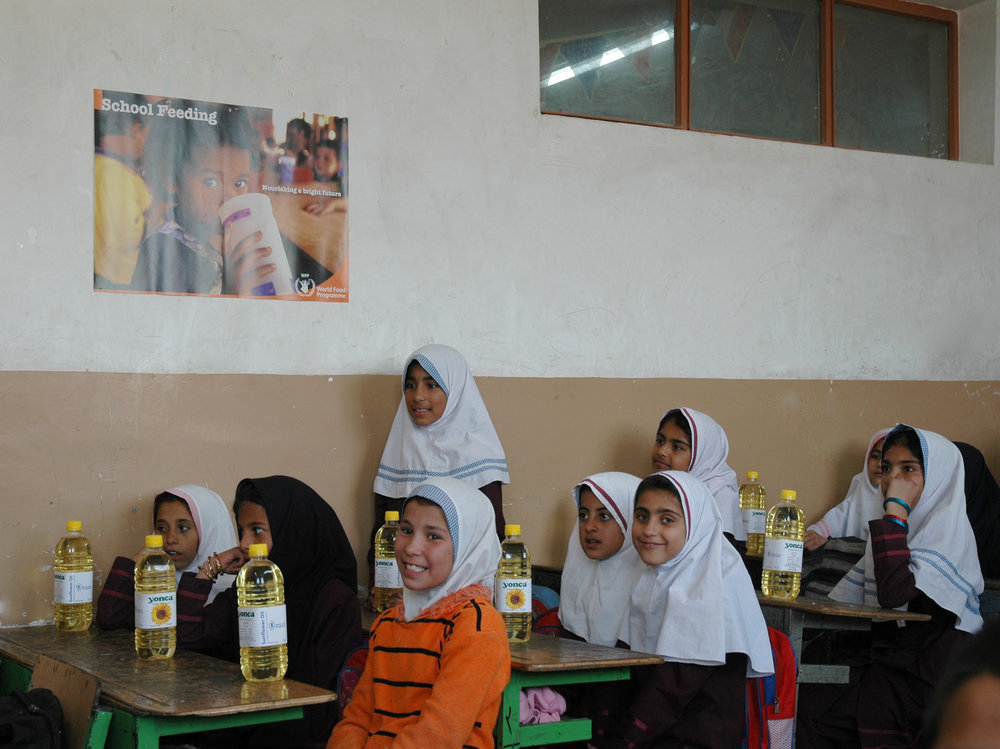
The provision of take-home rations of fortified vegetable oil as an incentive for refugee girls’ education has contributed to increased enrolment and regular attendance by females at primary and secondary schools, photo by Yalda Ashtari
This project started in 1999. When we were visiting the camps and when we were doing the food distribution we realized that although there were schools in the camps majority of the girls were not being sent to school. So it wasn’t because of lack of schools or facilities or unavailability. We dug deeper and spoke to the families and they said what the use of sending a girl to school is. If a girl stays at home she will be able to learn a skill and also contribute to the economy of the household.
Girls were usually either learning Kilim weaving from their mothers or embroidery, carpet weaving or shelling pistachios and the money was contributing to the family household.
So we said how about we give that money as a form of an incentive and back then we were only doing food distribution. The most expensive item in our food basket was the vegetable cooking oil. We said how about we give a tin of oil you send your girls to school after one month they bring back the oil and they all said yes. And this is how it all started. Now for almost two decades we’ve been doing this. [Back then] only 32 percent of girls who were eligible to attend school were actually going to school; now those statistics have risen to well over 80 percent, so this means that the girls are educated and empowered. This means that they will either be up for a career or take their education further, but at any case these girls will become women who are educated and will be better mothers for the family, will be better able to organize the household expenditure and all of these will contribute to the food security of the family. So it’s a long term investment, but it does pay off.
Q: Where does WFP Iran’s funds come from?
A: WFP is completely and 100 percent funded by governments, private sector, individuals and institutions. In Iran we’ve been lucky to attract the attention of a number of donors. Germany, the Republic of Korea and China are large donors to the WFP, specifically to the WFP Iran.
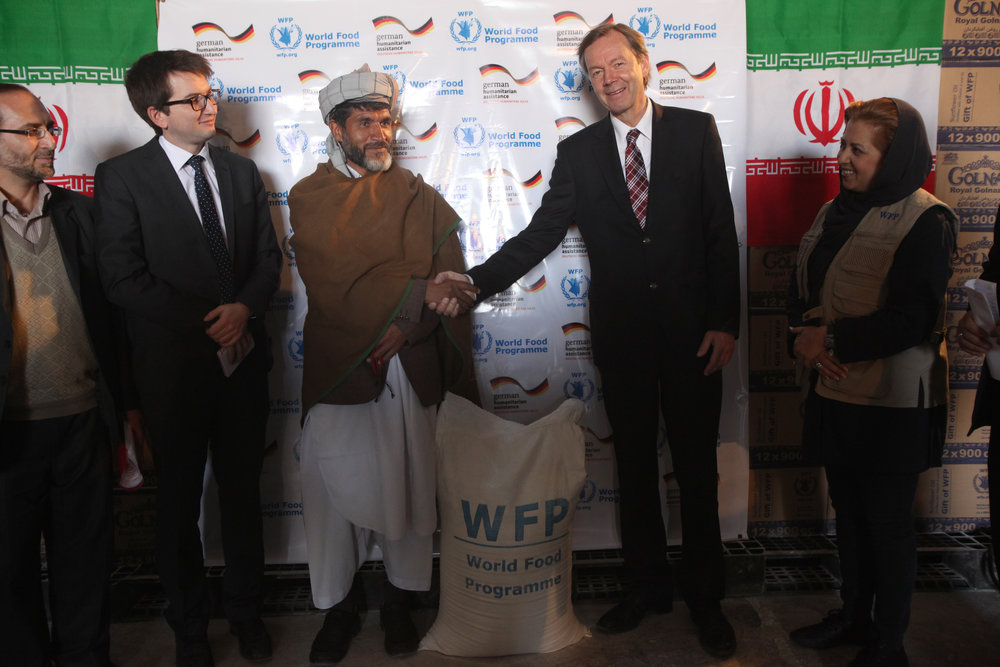
An undated photo of Michael von Ungern-Sternberg, the German Ambassador to Iran (2nd R) visit with the refugees
We prepare proposals, we go and present our project to the donors, and I do that myself through the embassies and ambassadors here. We explain to them what it is that we do we ask for the money that is required to feed these many refugees for this amount of time. The proposals are reviewed and then sent to the capitals and depending on the availability of fund then the money is earmarked for WFP to spend in Iran. The money is earmarked at our headquarters and we receive the funds and we usually do local procurement here.
We are here to complement the assistance of the government of Iran to the refugees. When you look at the broader picture there are more than a million registered refugees in Iran majority of them live in the urban areas almost all of them benefit from primary education as well as healthcare.
So the money that we get we invest in buying food inside the country. The reason why we do that is because there is a thriving food supply in Iran. The suppliers are quite well equipped to do business with us. The leap time, the time from the moment we actually get the money up until the moment we can deliver the food to the refugees is much shorter when we buy it locally and quality issues do not arise because this is the food that is being produced locally here and goes through the rigorous institutes of standards regulations and is readily available. So the majority of the food we buy here locally.
Q: How about the government of Iran. Do they make any contributions to WFP? What about Iranian NGOs?
A: The government of Iran is our implementing and cooperating partner. We are here to complement the assistance of the government of Iran to the refugees. When you look at the broader picture there are more than a million registered refugees in Iran majority of them live in the urban areas almost all of them benefit from primary education as well as healthcare. These are all investment of the government of Iran. We are providing food assistance, so we are helping with that and we are doing it through the government.
Our implementing partner is the Bureau of Aliens and Foreign Immigrants Affairs. It’s a department within the Ministry of Interior that has been mandated to assist with all refugee related matters. We have a very close partnership and cooperation with the government.
We are not currently working with any NGOs. For our new cash component we will be engaging with the private sector and the banking sector so these will be our new partners as of 2018.
Q: The second of the seventeen proposed Sustainable Development Goals (SDGs) is “end hunger, achieve food security and improved nutrition, and promote sustainable agriculture by 2030”. Is it actually possible to achieve zero hunger by 2030?
A: We do firmly believe that achieving zero hunger is doable in our lifetimes. We do believe that there is enough food around the globe to feed everyone. It is not being utilized in the right way, so sustainable food systems is also an issue. This is a global issue which requires a collective approach.
If all the countries who have signed up to the Sustainable Development Goals (SDGs) specifically SDG 2 put in their effort we do believe that it is possible to achieve zero hunger in our lifetimes and hopefully by 2030. Iran is in a much better state than other countries but Iran is also contributing at global level to the goal of achieving zero hunger.
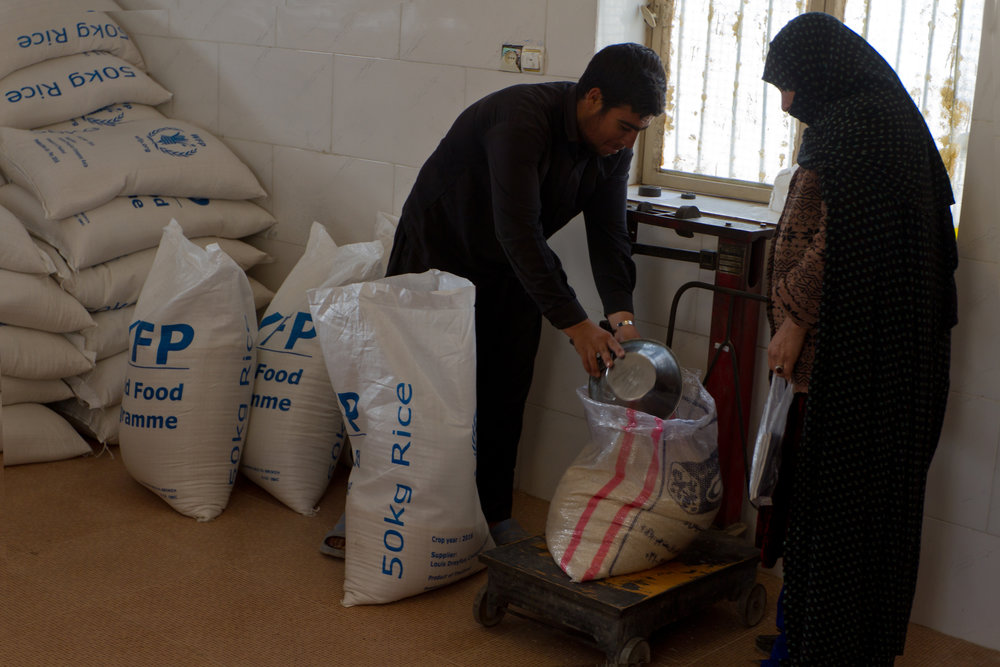
Food distribution, photo by Mohammad Khodabakhsh
Q: What are your plans for commemorating the 30th year of WFP presence in Iran?
A: There will be series of events to commemorate our presence. It’s not good to be in this business for so long. This means that there are still issues to be tackled with. Nevertheless we believe that during these 30 years we had a number of success stories, a number of happy endings that is good to hear about. In this day and age when you always hear about conflicts, displacement and things that are very sad I think that there is a very good story to tell about Iran.
We will be commemorating our 30th anniversary through series of events. I won’t say much because I want it to be a surprise but we are planning to do something big and to raise awareness on not only issues related to Iran but again in the general discourse of zero hunger and SDG 2. It will be in second half of November.
The media has been one of our most trusted and favorite partners because you spread our word. Usually when we are working we are so involved in the work itself that we forget to talk about it. The media has been very kind to spread the word on our behalf and to raise awareness.
MQ/MG
Leave a Comment